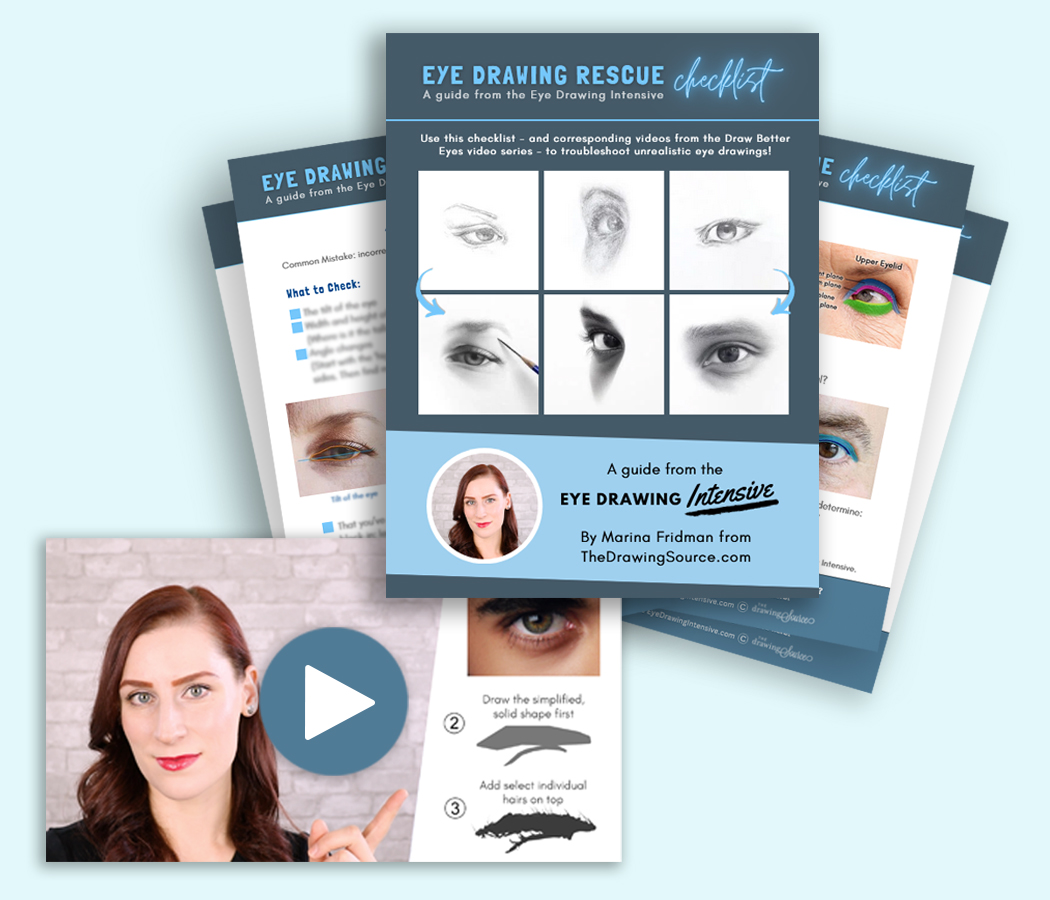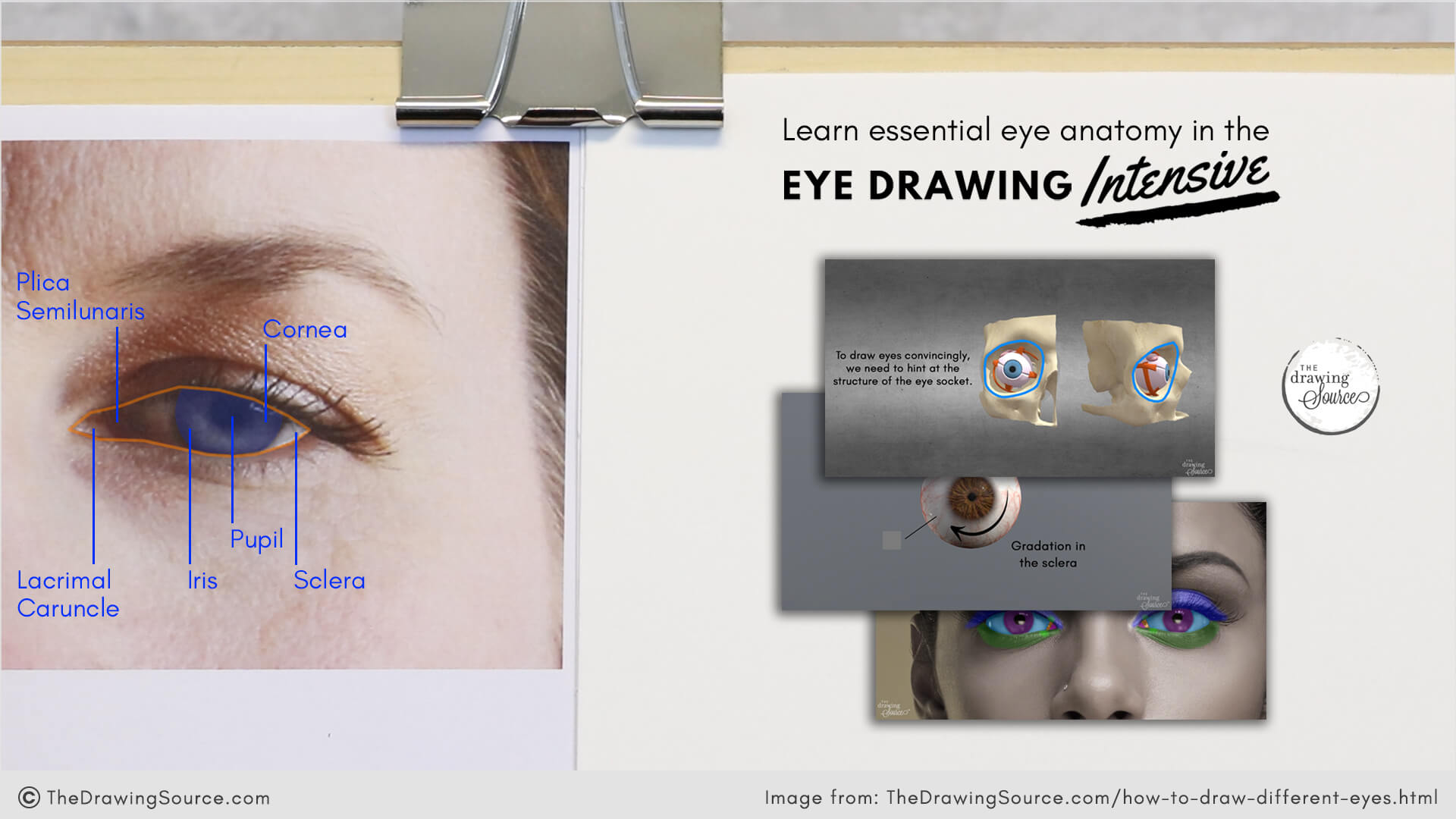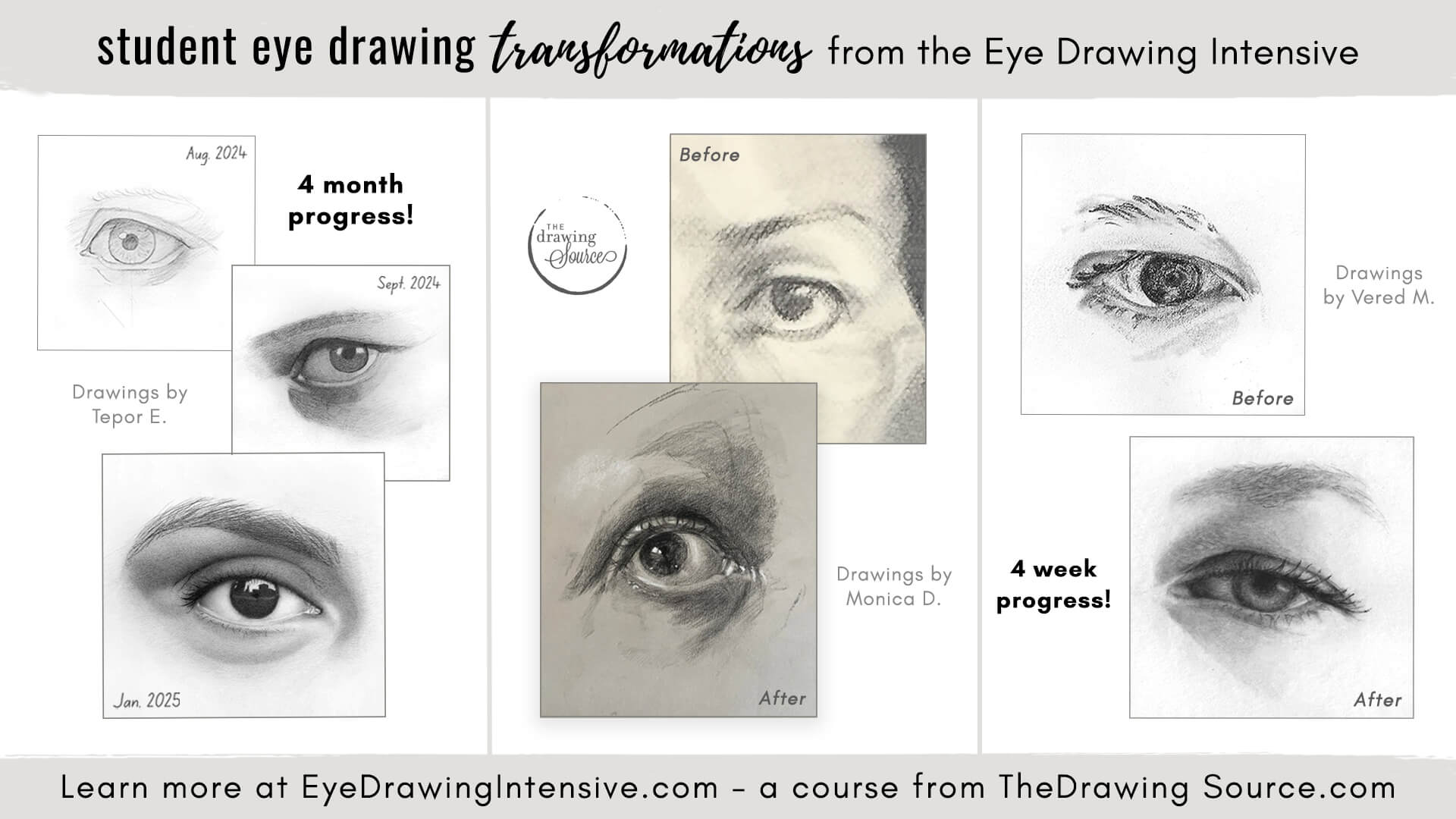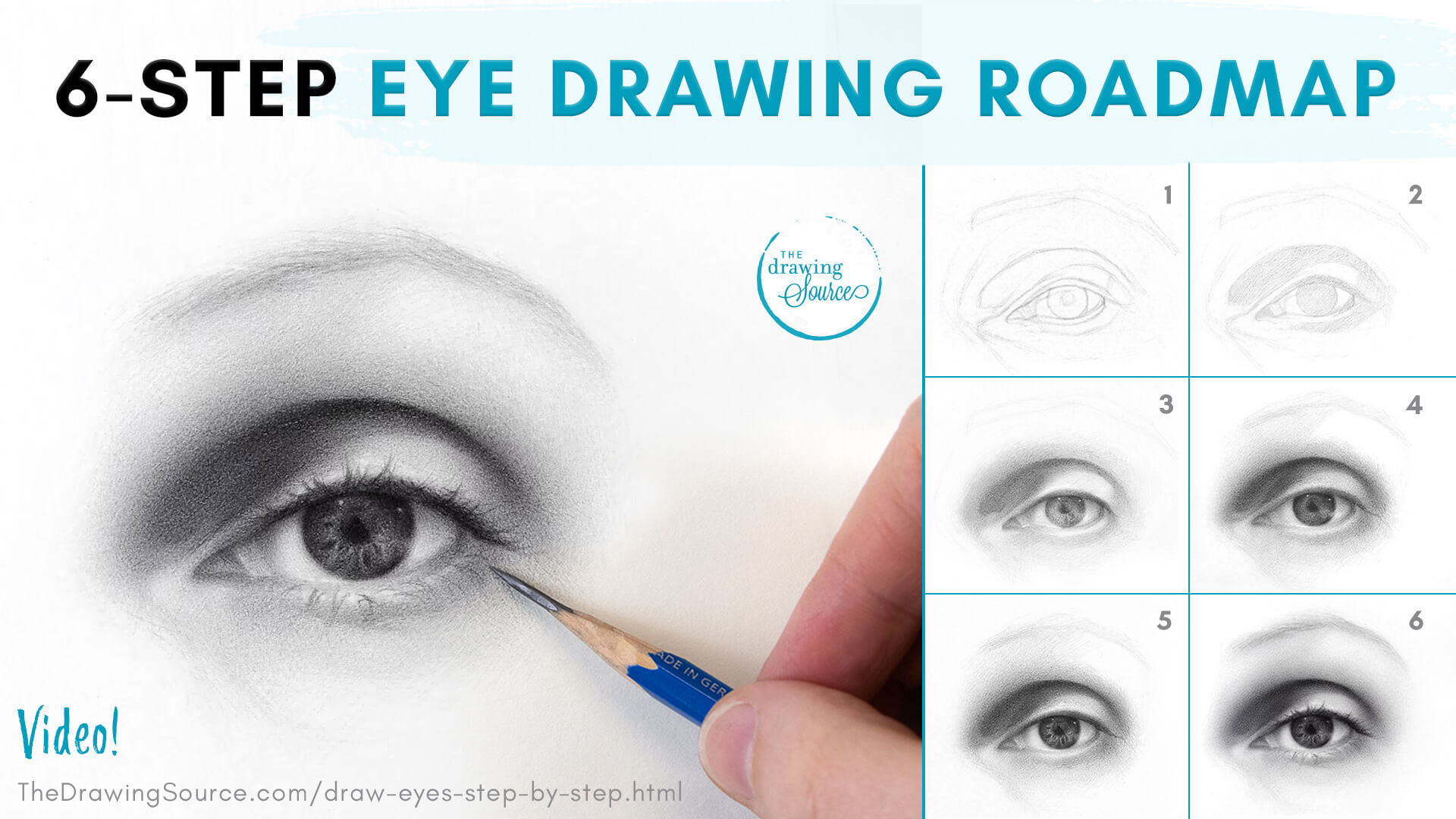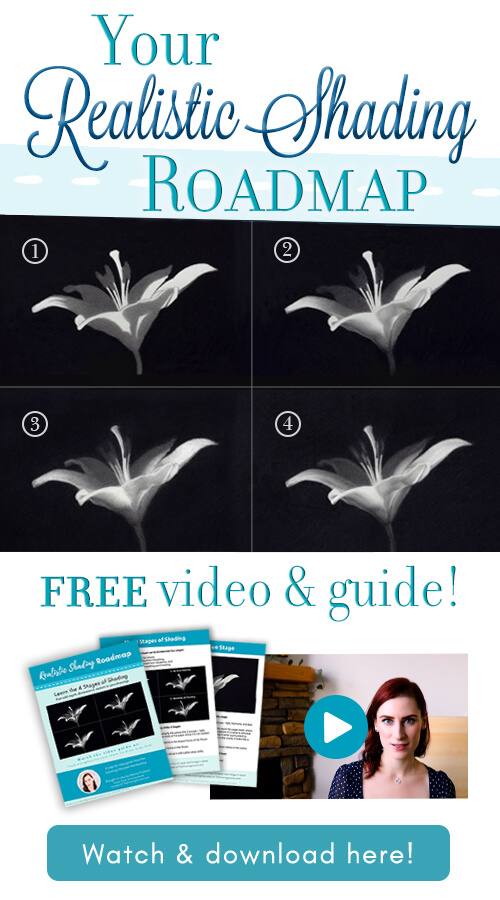- Home
- Portrait Drawing
- Eye Drawing Hub
- How to Draw Different Eyes
How to Draw Different Eyes
(and Why Yours Might All Look the Same!)
Are you struggling to figure out how to draw different eyes — so they don’t all end up looking the same?
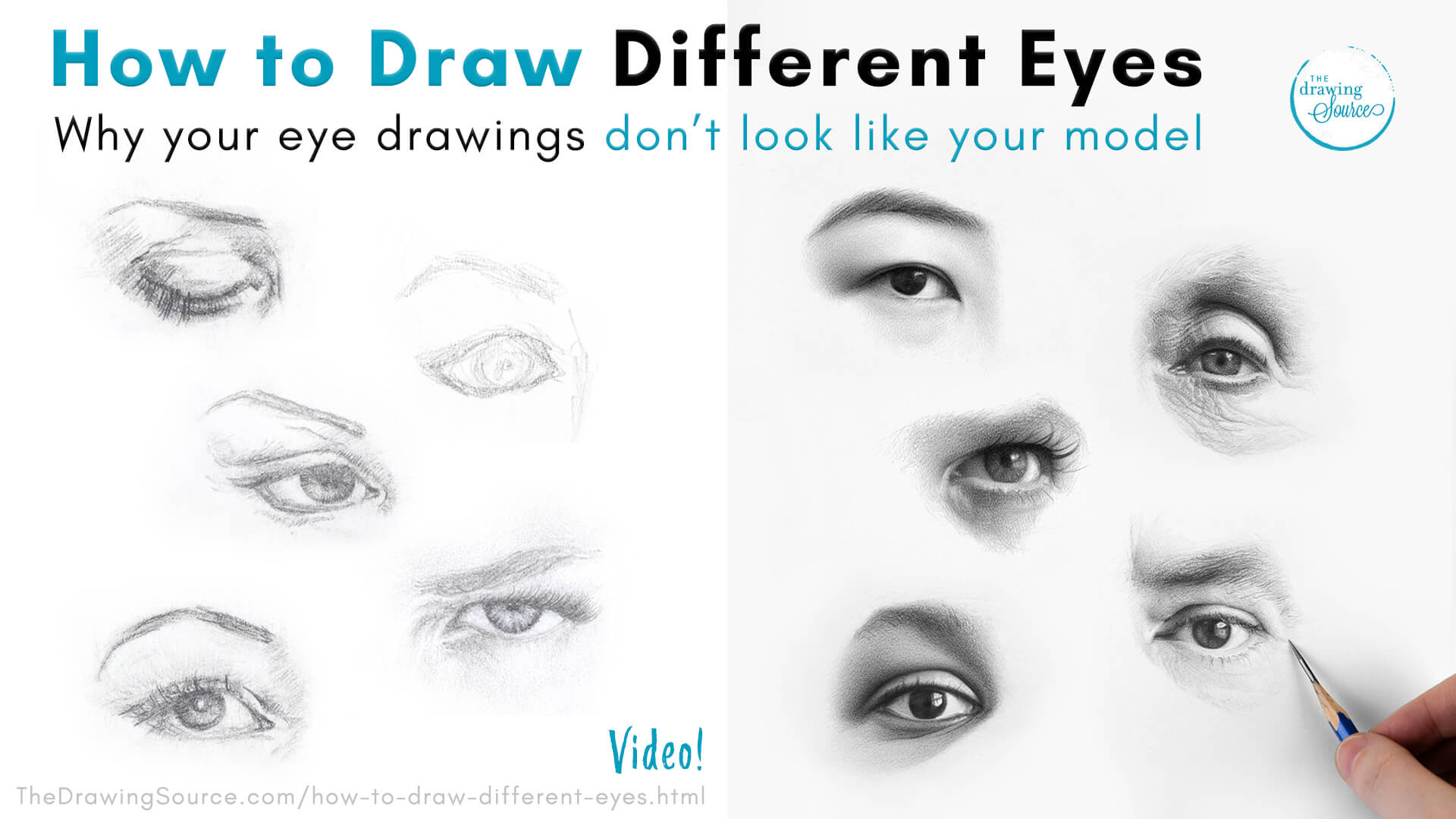
No matter who you're drawing — or what angle or pose you attempt — your eye drawings somehow all resemble the same generic person?
You're not alone! This is one of the most common frustrations I hear from students, and I struggled with it too when I first started drawing eyes. But there's a specific reason this happens — and once you understand it, you’ll know exactly what to focus on to fix it.
In this video, you'll learn:
✏️ Why your eye drawings keep looking the same
✏️ Which part of the drawing process to focus on, to fix it
✏️ And how to make your drawings look like the actual person and pose you’re observing
M O R E E Y E
D R A W I N G R E S O U R C E S:
- Eye Drawing Resource Hub
- How to Draw Eyes in 6 Steps [Video & Downloadable Guide]
- How to Draw Realistic Eyebrows [Step by Step Tutorial]
- How to Draw Realistic Eyelashes [Video Tutorial]
- How to Fix the 6 Most Common Eye Drawing Mistakes [Video Series]
Or, transform your eye drawings in my in-depth course:
The Eye Drawing Intensive
Watch the video below: How to Draw Different Eyes
(and why your eye drawings all look the same!)
This lesson is from my free Draw
Better Eyes Toolkit, which will help you troubleshoot and improve your eye
drawings with 6 short video lessons, and an Eye Drawing Rescue Checklist. You
can get the toolkit for free below:
Start here: Free Draw Better Eyes Toolkit
Fix the most common mistakes making your eye drawings look flat and unrealistic with 6 short video lessons and the Eye Drawing Rescue Checklist. Get the Toolkit here!
Prefer to read? The article version is below:
(But the video is more detailed - I recommend it!)
How to Draw Different Eyes
and why yours might all look the same!
In drawing,
specific shapes create likeness, or resemblance. Specific shapes make our
drawings look specifically like the model that we’re drawing:

What happens
when our shapes are inaccurate?
Best case scenario, if your shapes are a little bit off - your eyes might still look realistic, but they won’t look like the individual you’re drawing. They won’t resemble their unique eyes.
Unlike some other drawing subjects, portrait drawing is not forgiving.
For example,
if your
proportions and shapes are slightly off when drawing a still life like this
flower …
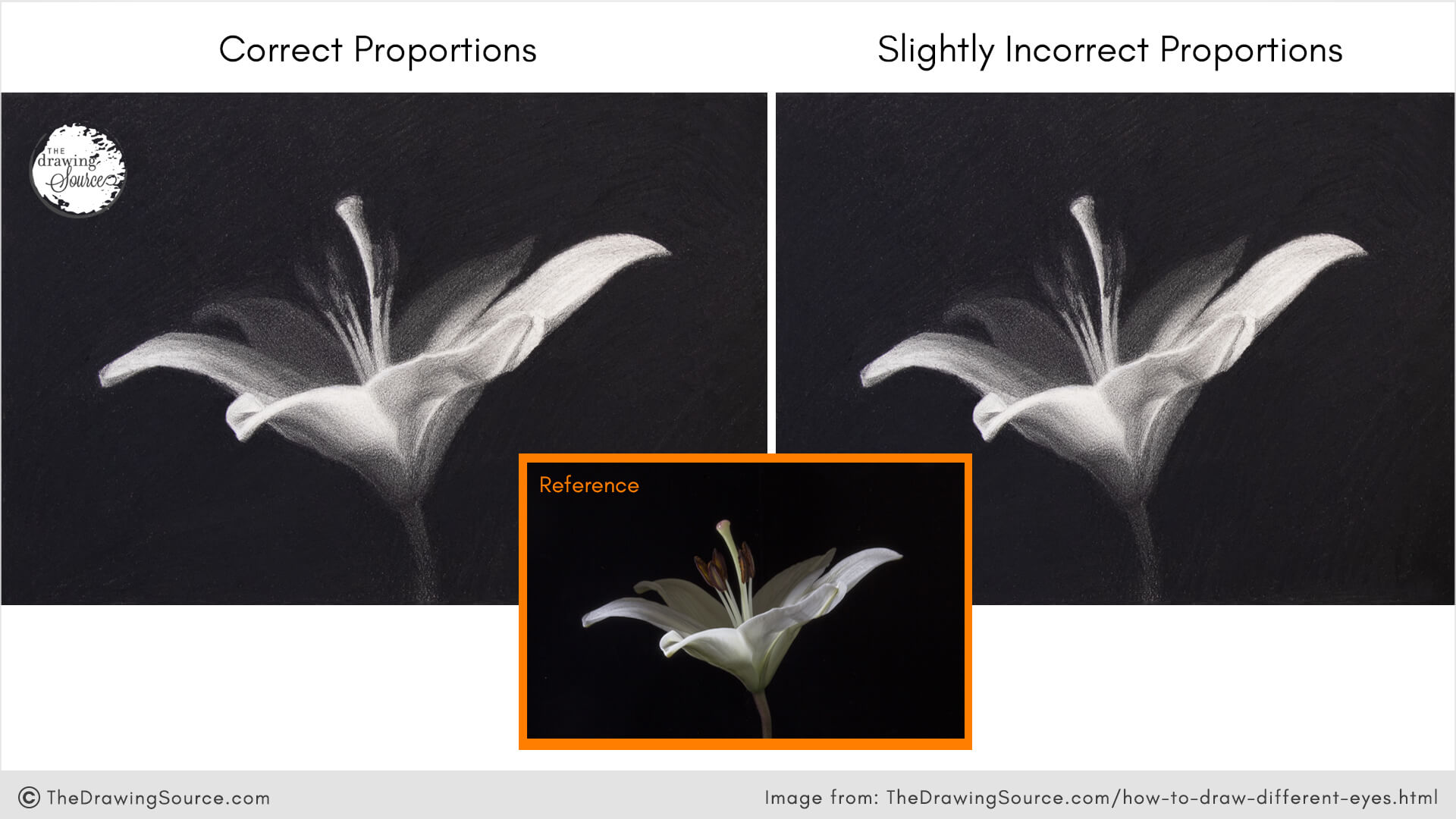
It’s still believable and realistic, right? It’s not the specific flower that you were
drawing, but without seeing the reference photo, you can't even tell! No
problem.
But, what happens if our shapes or
proportions are slightly off in a portrait drawing?
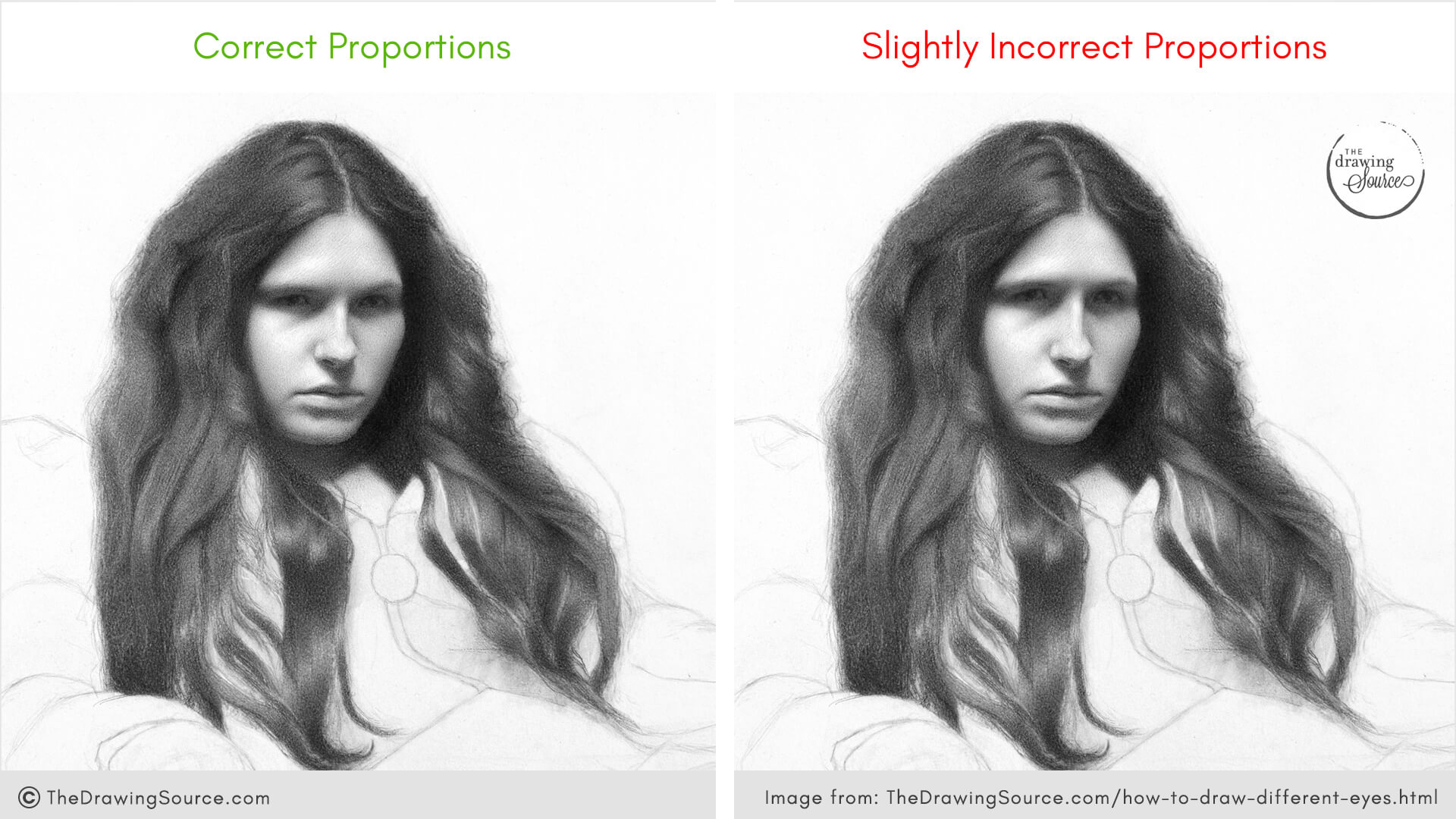
Yikes.
Suddenly we have a (mildly horrifying) caricature of our model.
With advanced subjects like the figure and
portrait, we can’t get away with much!
We must learn to observe, analyze and draw the shapes of our subject sensitively.
Look how distinctly unique all of these eye shapes are:
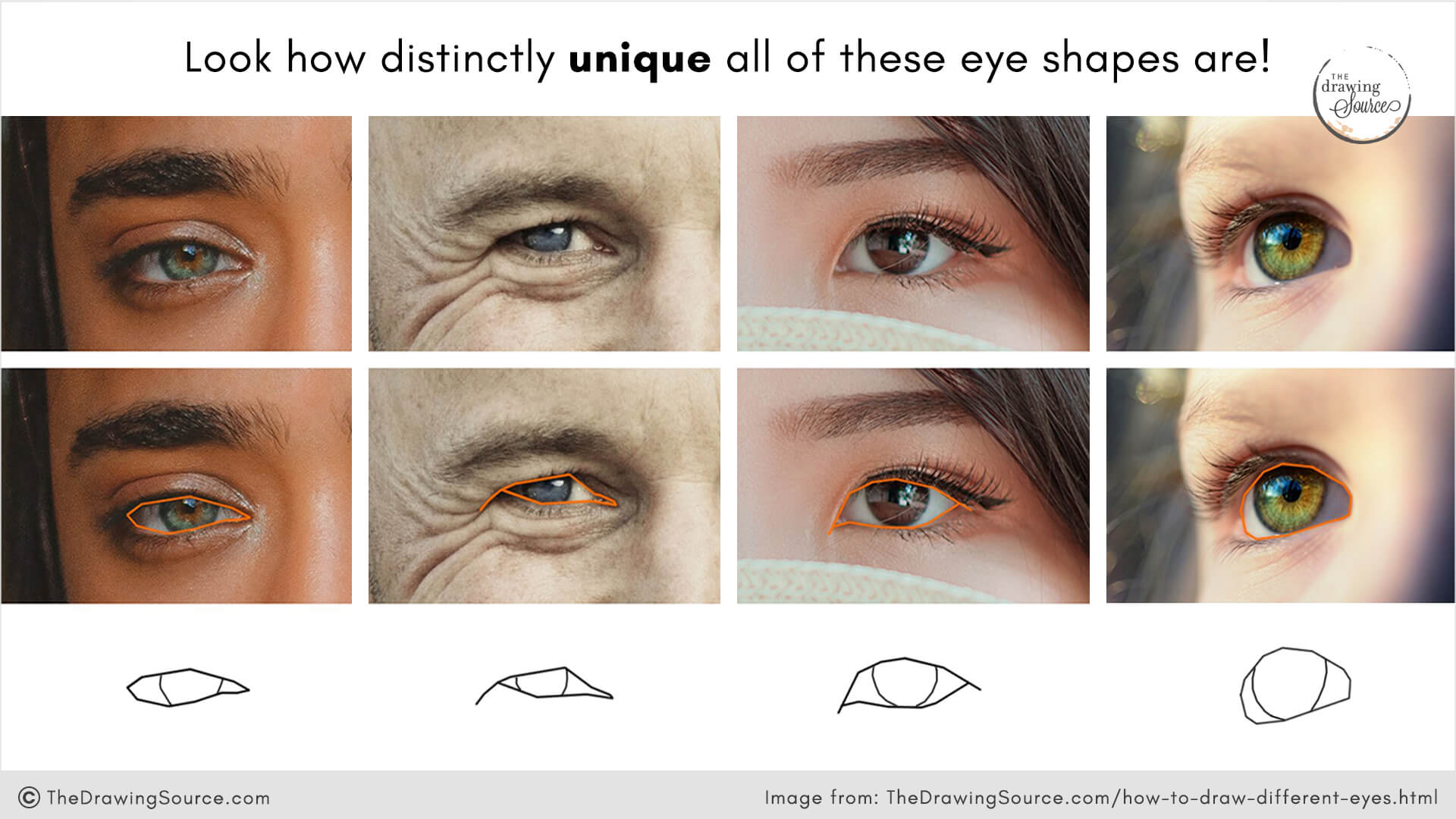
To
draw realistic eyes that look recognizably like those of our model, we must pay
attention to:
- the tilt of the eye
- the widths and heights of the eye, and
- where specific angle changes occur
I’ve used straight lines in the image above, to point out the distinct angle changes in each eye shape. Using straight lines is an important point – we’ll come back to this!
The opening of the eye isn’t the only shape we need to pay close attention to.
For example, the pupil and iris aren’t perfect
circles. Their
contours often have subtle angle changes, and their shapes shift depending on
one’s expression and tilt of their head:
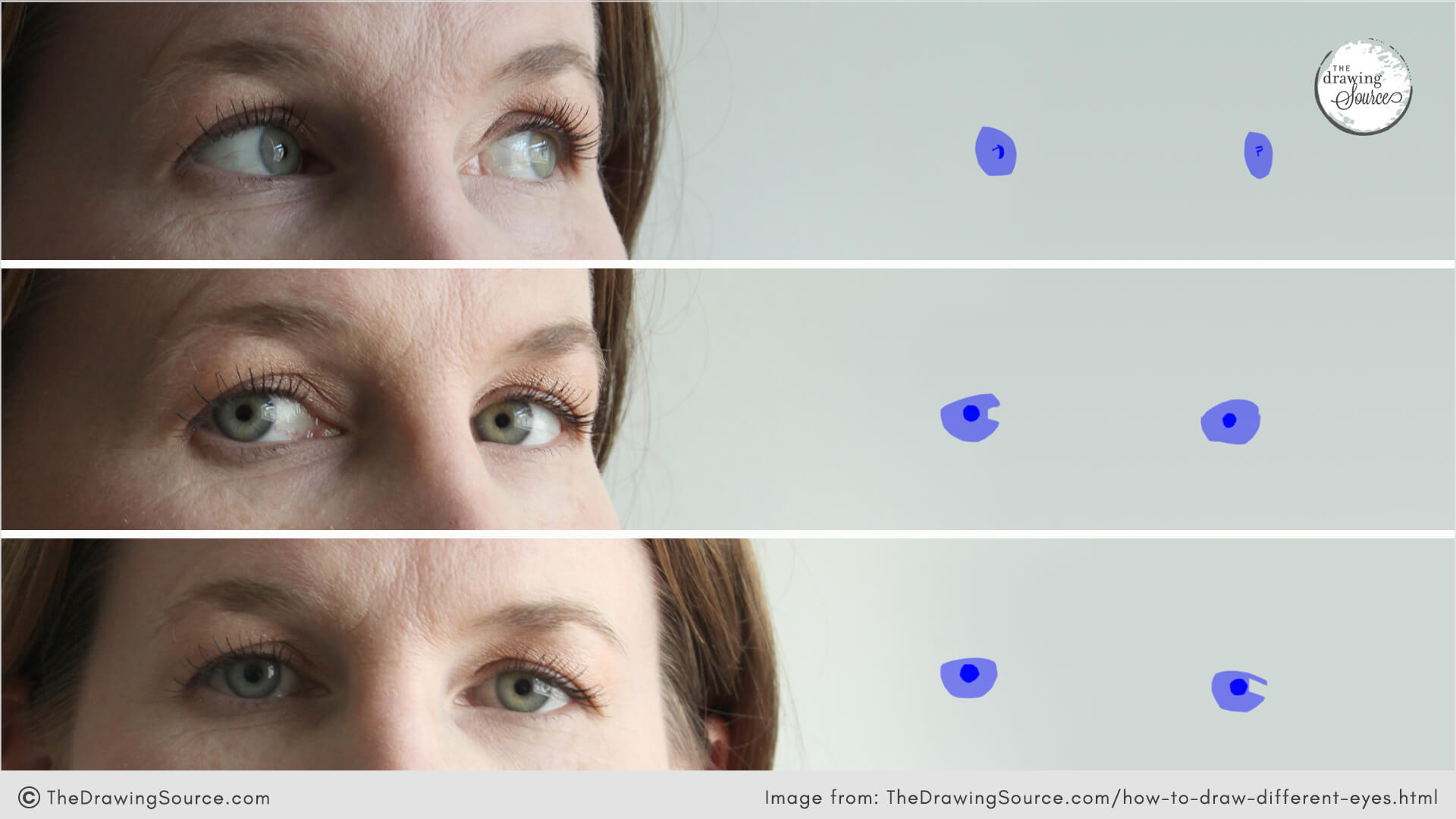
In fact,
every form of the eye is unique to each individual. This might seem
overwhelming at first, but once you know what to look for and how to anticipate
those shifting forms, capturing someone’s likeness becomes one of the most rewarding
parts of drawing eyes - and portraits overall.
In this
video and article, we’ll focus on the shape of the opening of the eye – this is the eye shape I usually
suggest that you start your drawings with.
How to Draw Different Eyes: Step 1
Now that
you’re seeing how unique every eye shape is, how do you draw it specifically
rather than generically? Try
following these steps:
Step 1) Start
your eye drawings by indicating the tilt of the eye.
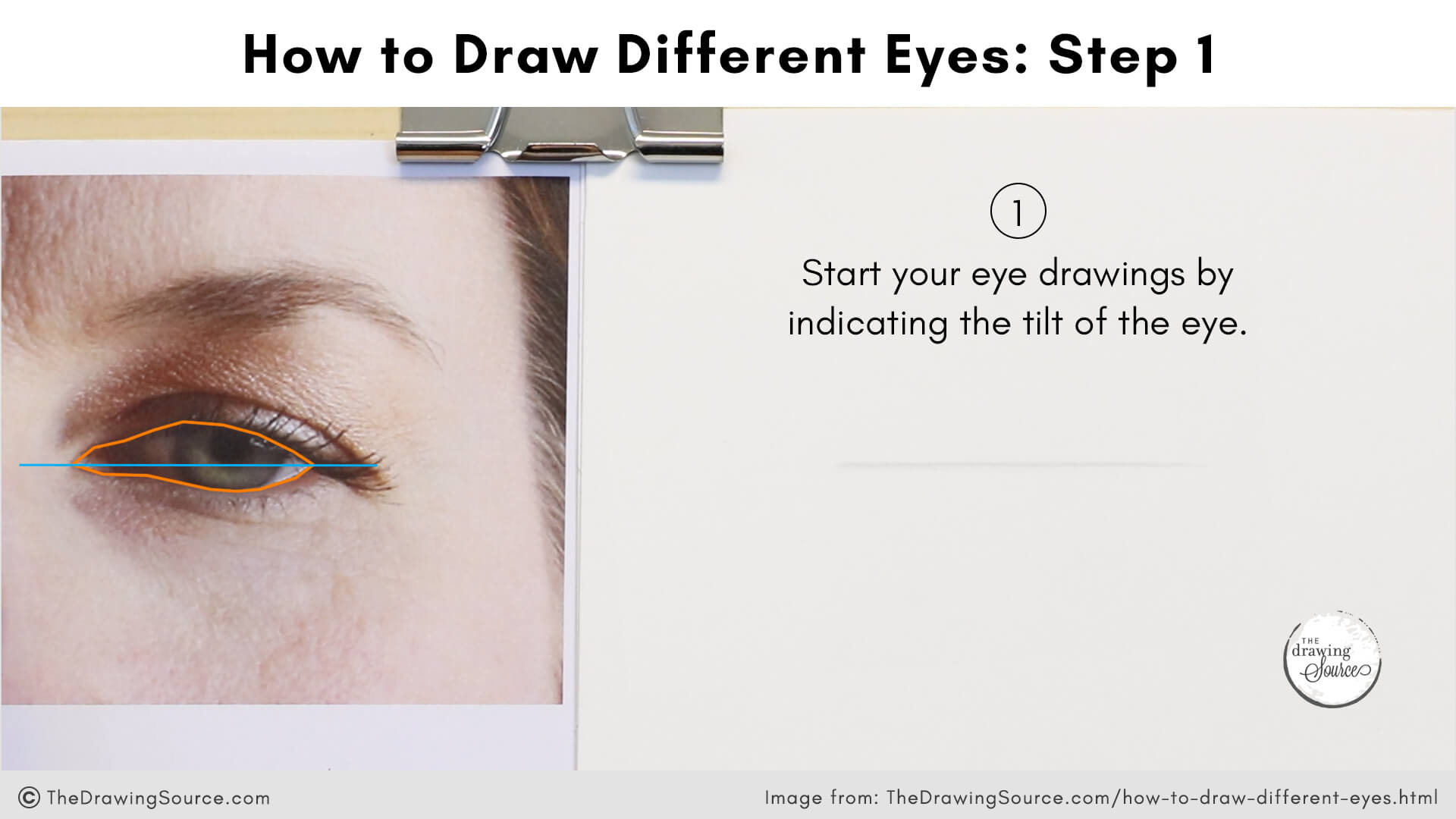 Watch the video at the top of the page for more details about this step!
Watch the video at the top of the page for more details about this step!
Notice that each eye below is at a particular angle. If we don’t establish the angle of the eye early on
in our drawing, it will be very difficult to create later.
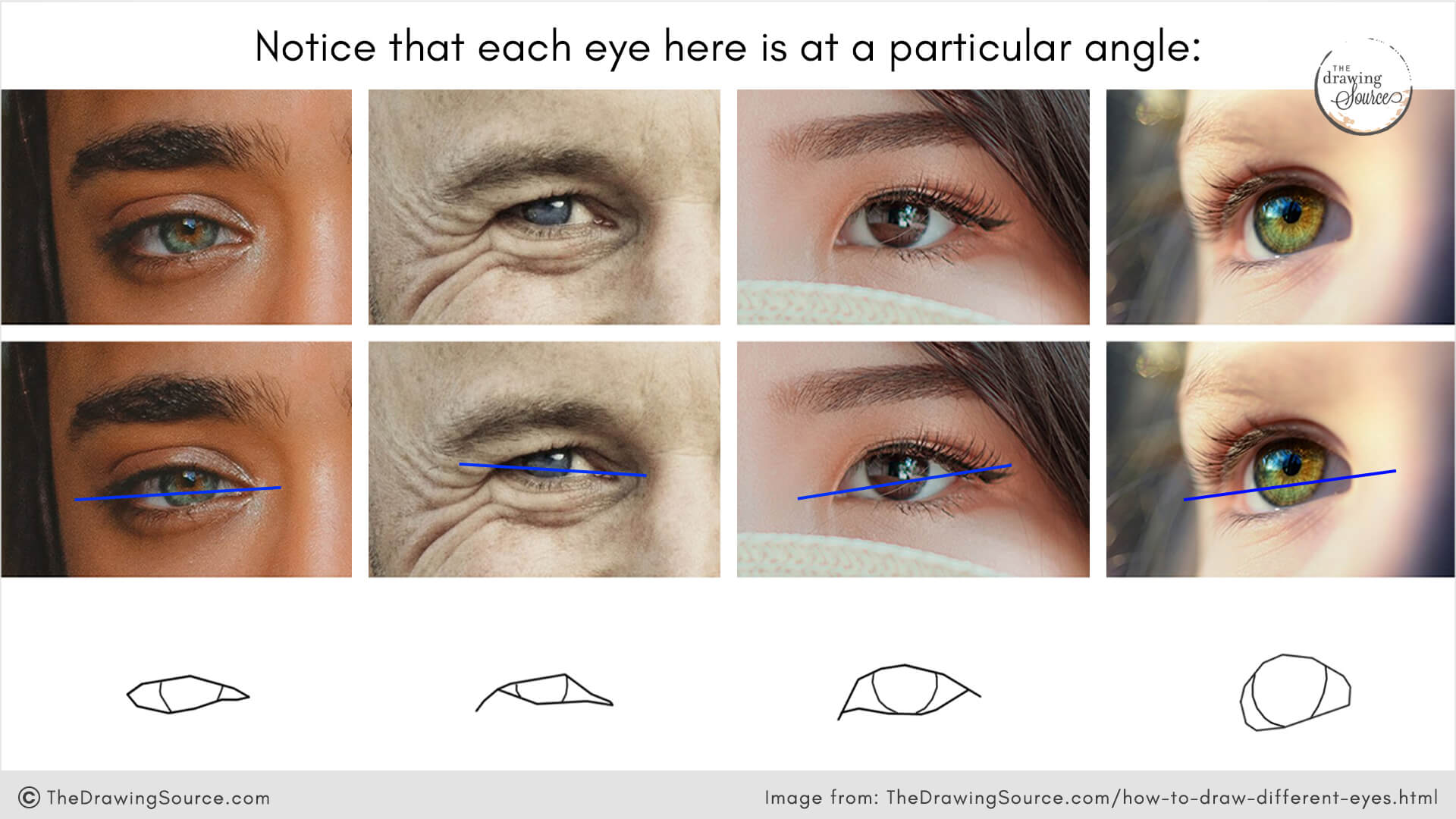
When drawing
an eye, often the first line I draw indicates the tilt of the opening of the eye, or of the
eye in general.
I visualize
this first angled line extending from approximately one corner of the eye to the other, and
then I mimic its angle on my drawing using angle-sighting.
Next, let’s
notice what’s included in this shape between the eyelids:
Parts of the eye visible in this pose:
- The sclera
- The white of the eye
- The pupil
- The iris and
- The cornea (this is the transparent cover on top of the iris - not extremely visible here)
- The 2 forms in the inner corner of the eye: the lacrimal caruncle, and
- the plica semilunaris.
We study anatomy so that we know what to look for. For example, students often don’t leave enough space for these 2 forms in the inner corner of the eye, because they don’t notice that they’re there, or that the 2 corners of the eye are very different. That’s a little bonus mistake for you to avoid!
Often we can’t see what we don’t know to look for.
We’ll cover essential
eye anatomy needed to draw believable eyes in the first module of the Eye
Drawing Intensive. It’s so much fun to learn and it will transform the way you see
eyes.
How to Draw Different Eyes: Step 2
Step 2) is
to analyze the widths and heights of this shape.
Where is it
the tallest? Where is it the widest?
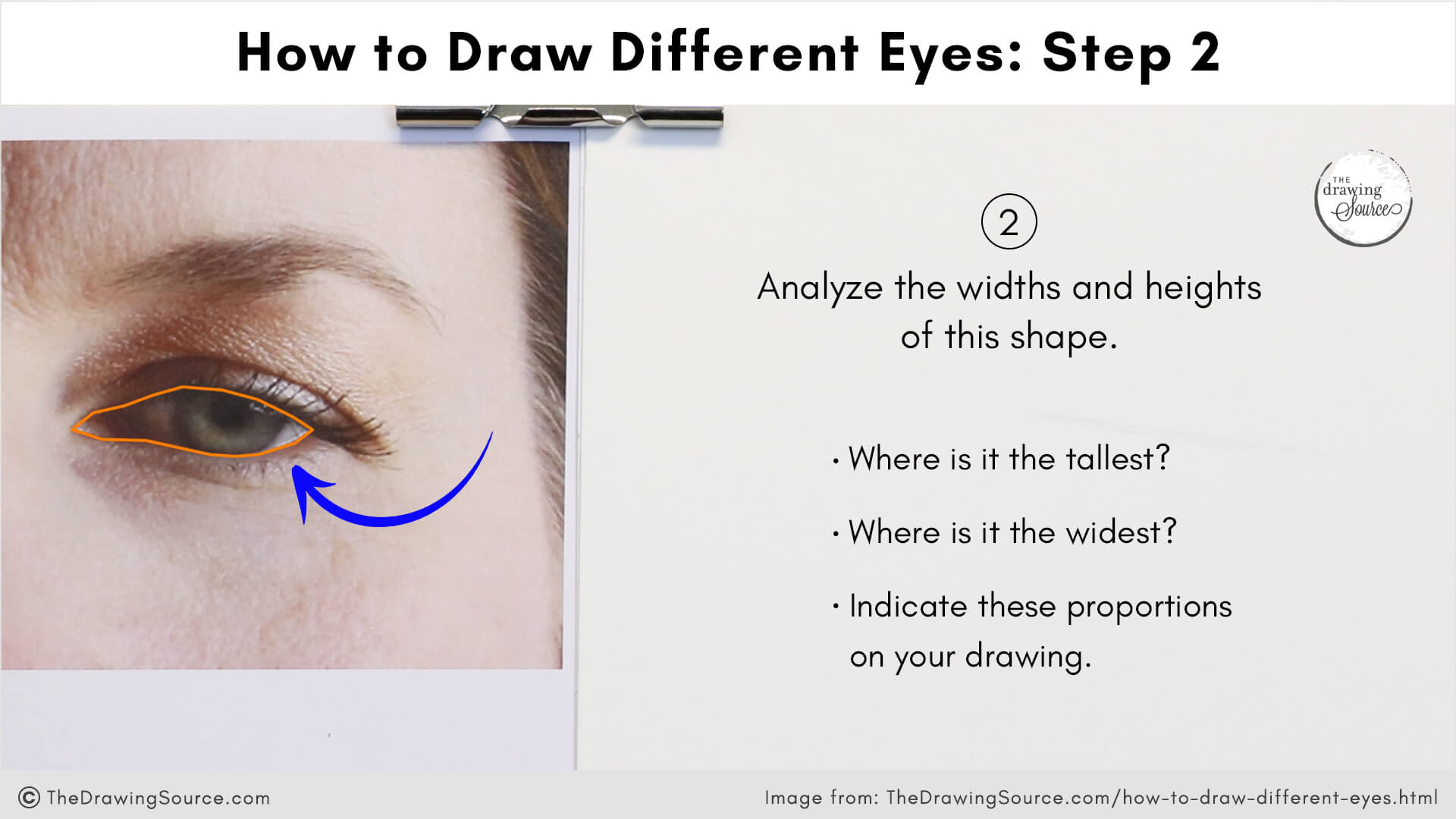 Watch the video at the top of the page for more details about this step!
Watch the video at the top of the page for more details about this step!
An easy way
to determine this is to imagine this shape fitting perfectly into a rectangle,
where the rectangle touches the highest point, lowest point, right-most point
and left most point of the shape. (Watch the video at the top of the page for examples of this!)
Now we have 4 boundaries, or high points, of this shape, as well as the overall height and width. Let’s mark the high points, because they will be important later.
Notice that the highest and lowest points are at an angle to each other.
Once you’ve
found the general height and width, indicate it lightly on your drawing to give
this shape boundaries.
How to Draw Different Eyes: Step 3
Step 3) Find
the major angle changes in this shape.
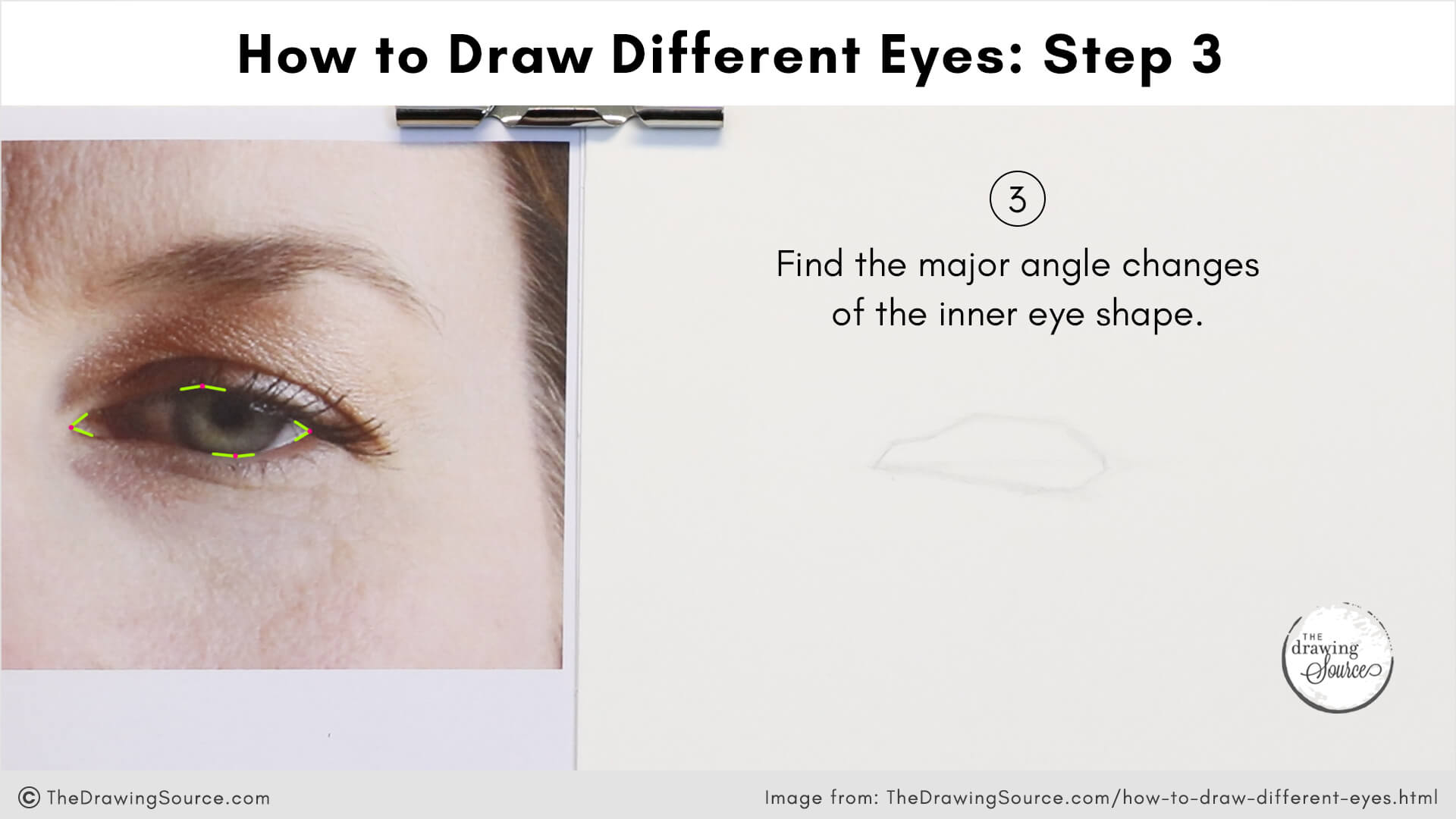 Watch the video at the top of the page for more details about this step!
Watch the video at the top of the page for more details about this step!
Finding angle
changes is a skill that takes practice. Here are a few tips and ways to go
about it.
We have already found the high points, or boundaries, of this shape.
Conveniently, there are usually major angle changes at these high points. Can you see them? At each one of these points, the line changes direction, that’s what an angle change is.
Next, can you see any other angle changes? They might be more subtle than the first ones. (Watch the video to see me point out the more subtle angle changes!)
If you’re
not quite seeing the angle changes, that’s okay. Try asking yourself: how would
I draw this eye, using only straight lines, and as few lines as possible?
No curving lines! This is important, because it will force you to decide where to end one line and where to start another one, and you will likely start and end your lines at angle changes.
Curving
your lines too early often results in generic shapes and generic drawings that
all look the same.
So, how
would you draw this eye using as few lines as possible?
I started with a shape that looks like the one above. Then I made it more specific by subdividing it with more angle changes.
This is an excellent starting point because we have identified:
- the tilt of the eye,
- the widths and heights of the eye, and
- where the specific angle changes are.
This is
already not a generic shape.
Step 4) is
to find and draw the even more subtle angle changes in this shape – and only
then start curving some lines (see the video for this step).
I don’t do
that until much later in the process, once I’ve added more information to my
drawing.
I
guide you through this in my Eye Drawing Intensive, which is where these
students transformed their eye drawing:
You can learn more about the Eye Drawing Intensive here.
How to Draw Different Eyes: A Summary
Now you know
that: if your drawing doesn’t look like the specific person you’re drawing,
you’re probably not drawing your shapes specifically enough.
To improve the accuracy of the shapes in your block-ins, don't miss my Bargue Drawing Level 1 course!
There you'll learn how to see and draw complex shapes accurately, and 10 ways to check the accuracy of your drawing. You can access Bargue Drawing Level 1 in my Drawing Decoded membership here.
To draw a shape
specifically and precisely, we must notice and draw:
- Its tilt
- Its heights and widths (these will vary at different parts of the shape)
- Where its specific angle changes are
Tip: To help you draw a shape precisely, don’t curve lines too early – use
straight lines for as long as possible. This will make you indicate specific
angle changes.
Now, there’s a lot of information when we look at an eye. How do we know which
shapes to actually include in our drawing? I teach this, and provide a
convenient checklist for you to use, in the Eye Drawing Intensive, which you can explore here.
There we'll also learn how the shapes and forms of the eye appear from different angles and in
different poses, so that you can learn to anticipate these shifting shapes, and draw them specifically, realistically, with convincing likeness and resemblance.
The issue of likeness arises in the block-in stage: the early line drawing that acts as your
blueprint for shading. If your
proportions and shapes are off here, no amount of shading will fix them.

So, the goal
is to make your shapes and proportions as accurate as possible by the end of
this stage. Then, in the next step of the eye drawing process – we’ll fill in
our shadow shapes with a flat, even value to check their accuracy even more
closely.
You can
learn about that next step — and the rest of the eye drawing process —
in my free video and downloadable guide on How to Draw Realistic Eyes Step by Step.
Watch this video next: How to Draw an Eye in 6 Steps
You’ll learn:
- The 6 steps of the eye drawing process are,
- How they build on one another, and
- The key priorities to focus on in each one.
Plus, download a free 6-Step Eye Drawing Roadmap guide!
Or, if you're ready to transform your eye drawings - so you can confidently and consistently draw realistic eyes that are the expressive jewel of your portrait drawings - I invite you to explore the Eye Drawing Intensive here.

Enjoyed this page? Please share it!
Share buttons below:
If you enjoyed this page on how to draw different eyes, you may also be interested in ...
Related Pages
How to Draw Eyes in 6 Steps [Your Eye Drawing Roadmap]
Draw Better Eyes - free Toolkit!
How to Draw Realistic Eyes: Step by Step Tutorial
How to Draw Eyelashes Step by Step
How to Draw Eyebrows: Step by Step Tutorial
Return from How to Draw Different Eyes to:
The Eye Drawing Hub | Portrait Drawing | Drawing Tutorials | Home

